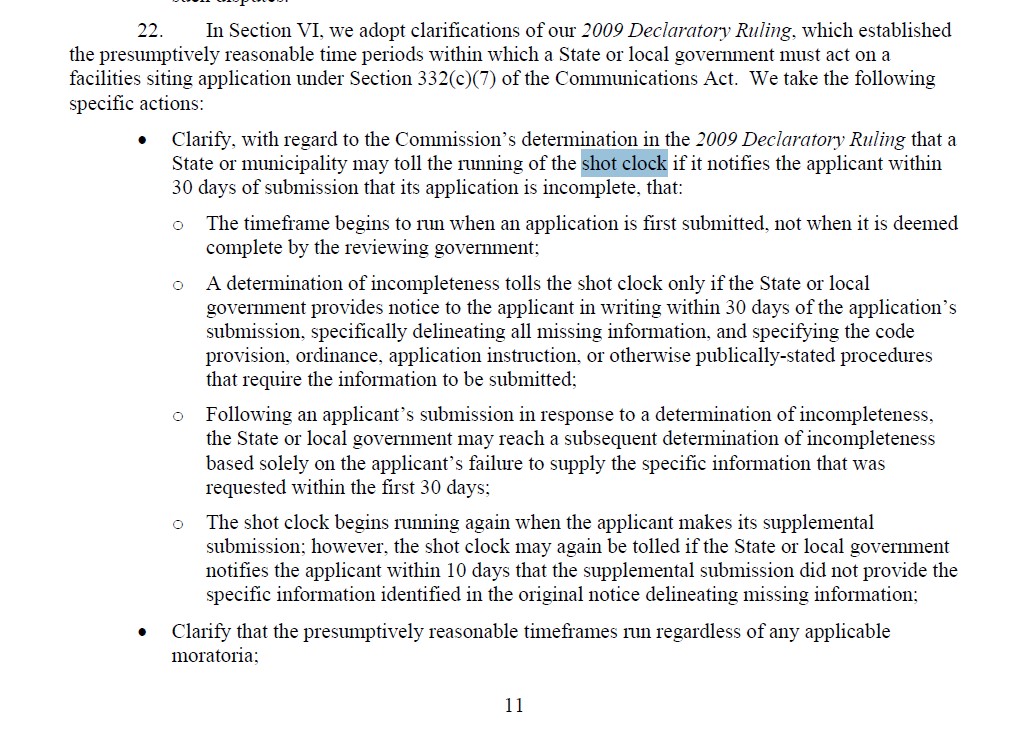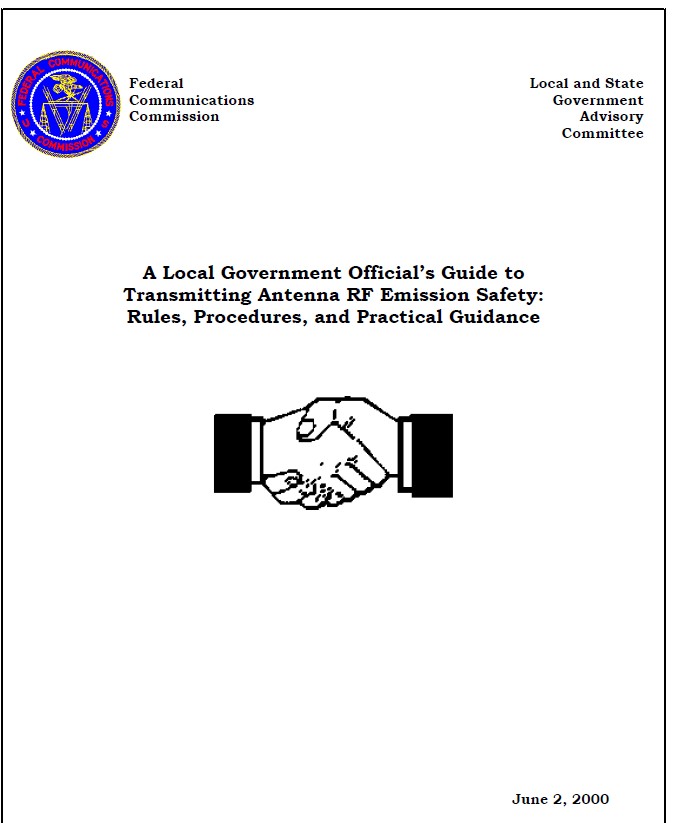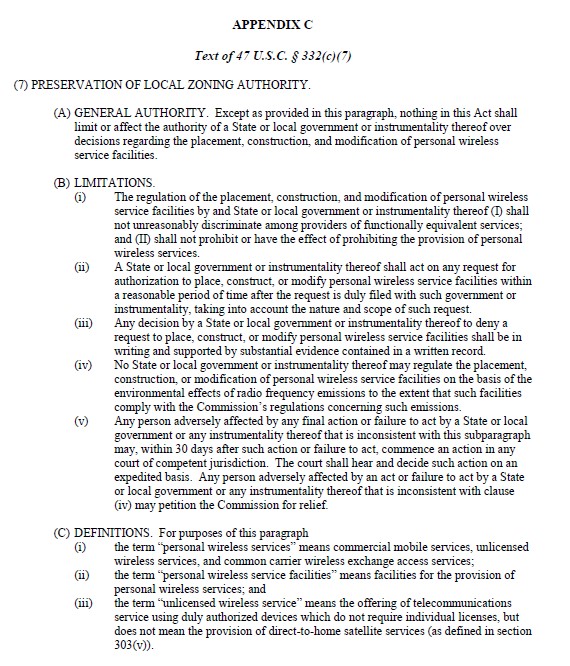PURPOSE AND DEFINITION
Per LAMC 62.08 - Specifications and Procedures for Above Ground Facilities (AGF) Installations in the Public Right-of-Way, an Above Ground Facility (AGF) shall mean any structure, monopole, antenna, cabinet, electric power meter, and any other appurtenance intended for wireless communications, video franchise, telecommunications, or utility purposes and intended to be installed above surrounding grade in the Public Right-of-Way. For the purposes of reviewing an AGF installation application, any structure, cabinet, electric power meter, and any other appurtenance that shares a common structural foundation shall be defined as one AGF installation. Any structure, cabinet, electric power meter, and any other appurtenance required to operate a facility, but that does not share a common structural foundation, shall be considered a separate AGF installation. The number of separate AGF installations shall be based on the number of separate structural foundations installed when the facility is fully operational.
The number of separate AGF installations shall be based on the number of separate structural foundations installed when the facility is fully operational. For the purposes of reviewing allowable AGF applications the following apply.
- All structures, cabinets, electric meters, and any other appurtenances that share a common structural foundation shall be defined as one AGF.
- All structures, cabinets, electric meters, and any other appurtenances required to operate a facility, but that DO NOT share a common structural foundation, shall be considered a separate AGF installation.
The AGF is a 2-step process:
- Approving the facility location in the public right-of-way (AGF Process)
- Construction of the approved facility through issuance of any of the following permits:
- Excavation “U” Permit (most common): All excavations in and adjacent to streets require an excavation permit per LAMC Sec. 62.02. This applies to all utilities that are authorized to occupy the public right-of-way by a City or State Franchise Agreement, Certificate of Public Convenience and Necessity from the Public Utilities Commission, or other legal authority, AGF permits are issued with an Excavation “U” Permit. Entities shall comply with the Above Ground Facility Specifications and Plans (AGFSP) and obtain an Excavation “U” Permit to install an AGF. Compliance with the AGFSP and approval of the Excavation “U” Permit are required prior to the start of any AGF installation work.
The Excavation “U” Permit is issued to allow construction, inspection, maintenance, repair, abandonment, or removal of facilities that require vertical boring, horizontal boring, directional boring, trenching, or excavation in the public right-of-way. - Excavation “E” Permit AND R-Permit (LAMC Section 62.08, Section III, B – Requirements for Non-utilities): Entities that do not have the state authority to occupy the public rights-of-way, shall comply with the AGFSP and obtain an Excavation “E” Permit and Revocable Permit to install an AGF. Compliance with the AGFSP and approval of the Revocable and Excavation Permit are required prior to the start of any AGF installation work. The Excavation “E” Permit is for the installation of the facility and the R-Permit is to get BOE approval for installing the facility in the public right-of-way.
- Excavation “U” Permit (most common): All excavations in and adjacent to streets require an excavation permit per LAMC Sec. 62.02. This applies to all utilities that are authorized to occupy the public right-of-way by a City or State Franchise Agreement, Certificate of Public Convenience and Necessity from the Public Utilities Commission, or other legal authority, AGF permits are issued with an Excavation “U” Permit. Entities shall comply with the Above Ground Facility Specifications and Plans (AGFSP) and obtain an Excavation “U” Permit to install an AGF. Compliance with the AGFSP and approval of the Excavation “U” Permit are required prior to the start of any AGF installation work.
LIST OF IMPORTANT TERMS
- Americans with Disabilities Act (ADA): Signed into law on July 26, 1990. The ADA includes a wide range of legislation intended to make American Society more accessible to people with disabilities. It is divided into five titles, one of which is Public Accommodations (Title III). Title III states that all new construction and modifications must be accessible to individuals with disabilities. For existing facilities, barriers to services must be removed if readily achievable.
- “ADA” shall mean the Americans with Disabilities Act of 1990, Pub. L. No. 101-336, 104 Stat. 328 (1990), as amended from time to time.
- “Board” shall mean the Board of Public Works.
- Boulevard I and II and Avenue I, II, and III (formerly called Major Highways and Secondary Highways): his is a street classification as defined under the City’s Mobility Element of the 2035 General Plan (updated March 7, 2017 per Ordinance 184718). Please refer to BOE Standard Plan S-470-1. Certain Community Plans and Specific Plans within the City have established modified designations and/or standards for some specific Boulevards or Avenues or Boulevards or Avenues segments.
- “City Block” shall mean the Public Right-of-Way area between two adjacent intersections of two sets of intersecting streets, provided that the end of a street that does not intersect with another street shall be considered an intersection for this purpose.
- Design Review Board: In approximately one-third of the City’s Specific Plans, development plans must be reviewed and approved by a Design Review Board. This Board is composed of members appointed pursuant to LAMC Section 16.50.
- “Least Intrusive Means” shall mean the least amount of physical or aesthetic intrusion into the Public Right-of-Way, taking into account the physical characteristics of an AGF, including, but not limited to, size, shape, height, volume, color, noise, camouflaging and screening.
- “Public Right-of-Way” shall mean land that is dedicated for public use, including, but not limited to, improved public streets, sidewalks, curbs, gutters, public utility easements, and parkways, as well as dedicated unimproved areas.
- “Shot Clock” shall refer to term used by the FCC involving the specific amount of time a local agency has to approve or deny an application.
- “Small Cell” shall mean a Utility Pole-mounted antenna or group of antennas with a total cumulative volume of not more than 3.0 cubic feet excluding cable and conduit. The installation of a Small Cell shall utilize supporting elements that allow for no more than a six-inch extension (stand-off) from the Utility Pole, except when additional stand-off is required to comply with applicable health or safety regulations. The installation of a Small Cell shall not be more than 6 feet above the highest transmission lines on a Utility Pole.
- “Street” shall include any street, highway, avenue, lane, alley, court, place, square, curb or other public way in this City which has been or may hereafter be dedicated and open to public use, or such other public property so designated in any law of this State.
- “Utility Pole” A Utility Pole is defined as any pole which is used to support power, telephone, cable television, or other suspended telecommunications wires, and shall not include a monopole or antenna. For purposes of this section, a guy pole associated with a Utility Pole shall be considered to be a Utility Pole.
LAWS, CODES AND REGULATIONS CONCERNING THE ISSUING OF PERMITS FOR AGF INSTALLATIONS
The following information is provided as a reference. Specific details about applying these laws, codes, and regulations to the AGF installation process can be found in Section C 0800.5 – AGF General Conditions and Requirements.
- AGF Ordinance – LAMC Section 62.08 – effective 9/12/2012 (Originally added 1/29/03)
- City of Los Angeles Brownbook
- Board Report - Above Ground Facilities (AGF) Formal Aesthetic Requirements for Variance Requests, dated April 3, 2019 and effective April 15, 2019
- Board Policy 797 - Formal Co-Location Requirement for Requests of Variance from the Height Limit of the Above Ground Facilities (AGF) Ordinance, dated July 31, 2019 and effective November 20, 219
- Board Policy 798 - Occupant Notification for AGF Installations, dated September 27, 2019 and effective October 27, 2019
- White Paper - Street Damage Restoration Fee Ordinance (December 6, 2018)
- California Public Utility Code Section 7901 (time, manner & place)
- California Government Code 65850.6 (cannot deny permit for wireless telecommunications co-located facilities)
- 2009 Declaratory Ruling, Section 3332(c)(7) - FCC 90 & 150 day shot clock ruling- effective 11/18/2009
In a nutshell ~ the City has stated as part of LAMC 62.08,III.C that “The review period many be extended if the permit application includes hardship waivers or variances as stated in LAMC Section 62.08.II.B.1, V.B, Section V.H”. However, the 2009 Declaratory FCC Ruling supersedes the City by stating the City must process the following:- 90 days for the review of collocation applications
- 150 days for the review of siting applications other than collocations
The lack of a decision with the above time frames constitutes a “failure to act” on which a service provider may commence an action in court (under Section 332(c)(7)(B)(v).
- FCC 60 day shot clock ruling – effective 4/18/2015: This ruling implements § 6409 of the Spectrum Act (codified at 47 U.S.C. 1455), which requires a State or local government to approve any eligible facilities request for a modification of an existing tower or base station that does not substantially change the physical dimensions of such tower or base station.

- California Government Code 65964.1(1): The city or county fails to approve or disapprove the application within a reasonable period of time in accordance with the time periods and procedures established by applicable FCC decisions. The reasonable period of time may be tolled to accommodate timely requests for information required to complete the application or may be extended by mutual agreement between the applicant and the local government, consistent with applicable FCC decisions. (Effective 1/1/2016)
- Federal Telecommunications Act of 1996 – Prohibits municipalities from creating regulations that would ban or effectively prohibit personal wireless telecommunications service.
- FCC Local Government Officials Guide to Transmitting Antenna RF Emissions Safety. At the July 1, 2013 meeting of the FCC Intergovernmental Advisory Committee, the plan was to update this document “shortly” (as of October 2017). This is a voluntary guide to assist state and local governments in devising efficient procedures for ensuring that the antenna facilities located in their communities comply with the FCC’s limits for human exposure to radiofrequency (RF) electromagnetic fields.


Among other things, US Code Section 332(c)(7) provides that “[n]o State or local government or instrumentality thereof may regulate the placement, construction, and modification of personal wireless service facilities on the basis of the environmental effects of radio frequency emissions to the extent that such facilities comply with the [FCC’s] regulations concerning such emissions.” - LACMTA Stops and Zones
Comments